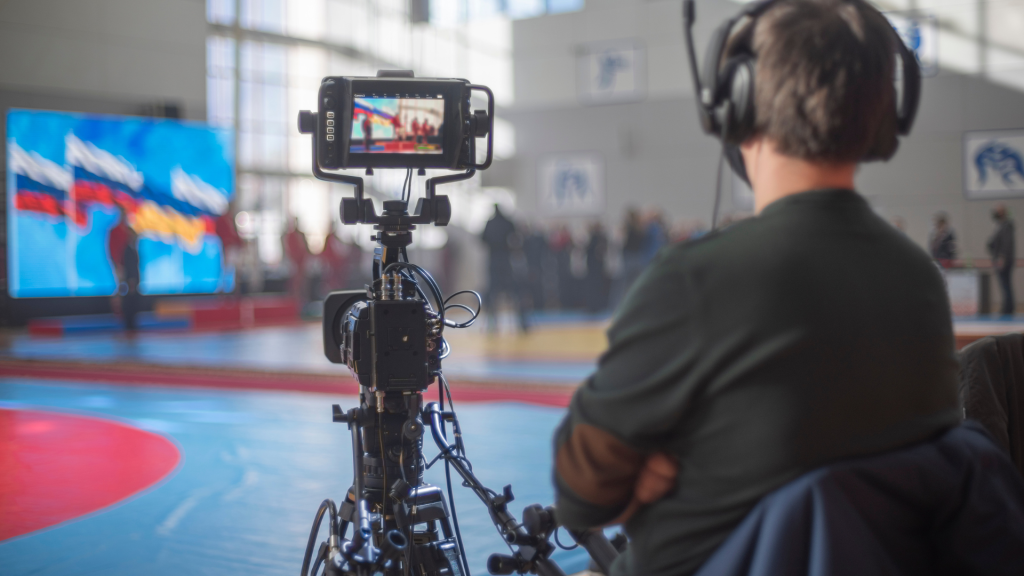Sports photography is a challenging branch of photography. You have to capture fast-moving objects and also be mindful of the background. The background should not distract the viewer from the action. And the subject, if it is moving, should be captured with speed and precision.
Sports photography is an exciting career but can seem complicated for beginners. Luckily, it is a field where a lot of know-how is needed, but plenty of opportunities. With basic equipment, lighting knowledge, and patience, you can start your career making great photos. This guide offers a few tips on sports photography and shows how to make the most out of your experience.
Tips for taking perfectly-timed sports pictures
Know the Rules of the Game
If there’s one thing all sports photographers have in common, it’s their experience taking sports pictures. But having experience doesn’t guarantee great action shots. Like any photographer, a great sports photographer knows the basics of photography: exposure, focus, composition, light, etc. But taking great action photos requires more than just knowing the rules. You have to know the game, too.
Don’t Waste Your Time Chimping.
Chimping is the practice of taking sports pictures at the exact moment an athlete does their best action. Shooting sports photographs isn’t easy. The timing has to be right, and you need to be in the right position to catch the perfect shot. Fortunately, if you have the right gear, such as a camera with an intervalometer feature, you can capture any sports or action shots perfectly timed.
Use Shutter Priority Mode
Capturing that perfect action shot can be difficult when you’re out on the field, on the sidelines, or at the gymnasium. You need a shutter speed that locks down your shot, excellent lighting, and a fast, steady camera.
To get the most out of your camera’s shutter speed settings, take a second to think about the shutter priority mode. This mode allows you to have precise control over your shutter speed, letting you shoot in sports, like when the ball is traveling at a high velocity, and still be able to freeze the action.
Consider using Back-Button Focusing.
Back-button focus is a feature that some smartphones, especially Samsung devices, have, which allows you to use the rear physical buttons on your phone as a focusing mechanism for your cameras. It allows you to take perfectly-timed sports pictures because by pressing the camera button right before you shoot, the camera knows exactly when to snap the shot based on the amount of time it takes to press the button and how long you hold it.
Get the Best Access You Can
Whether you are framing a picture of your team in action or capturing the best shot of a baseball or soccer game, there are some factors you need to consider when it comes to getting a great shot. Shooting at a distance means you need to think about your shutter speed, aperture, and ISO—whether you want to use automatic or manual mode.
Capture the Emotion of the Game
Whether you’re a dedicated sports photographer or simply want to capture the excitement of the big game, it’s important to take the perfect picture. There are many ways to make a great sports picture, but one of the most important is to be ready to capture the emotion of the game.
Sports photography is an excellent way to keep a piece of a game forever. Capturing the action during the game is only half the battle, though. After the game, take a few quick shots to capture emotion. If a player scored the winning goal, have them show their emotions near the goal. Sports photos with emotion make great keepsakes and conversation pieces.
Play with a Few Wide-Angle Shots
Wide-angle shots are fun, but sometimes the most difficult part of taking sports photos is getting the entire scene in the frame. Sometimes this involves making a lot of (but temporary) adjustments to your composition, but other times you can just try taking a few shots from different angles.
When it comes to sports photography, taking wide-angle shots can be a great way to capture either the whole game or all of the action from a specific point on the field. They also allow you to capture more of the players’ facial expressions, which can add an interesting and candid element to your photos.
Go Flashless
Any cameras have a small flash, which makes it easier to get a bright, midday, indoor shot. But if you’re trying to get a shot of your athlete’s face in sunnier conditions, the flash can be a problem. Schools and professional sports leagues have made the transition to using flashless camera systems, and for a good reason. Flash photography can disrupt gameplay, annoy fans, and negatively impact athletes’ eyes. Using flashless cameras to enhance sports photography is a safer and, in many cases, more professional alternative to shooting sports with flash.

